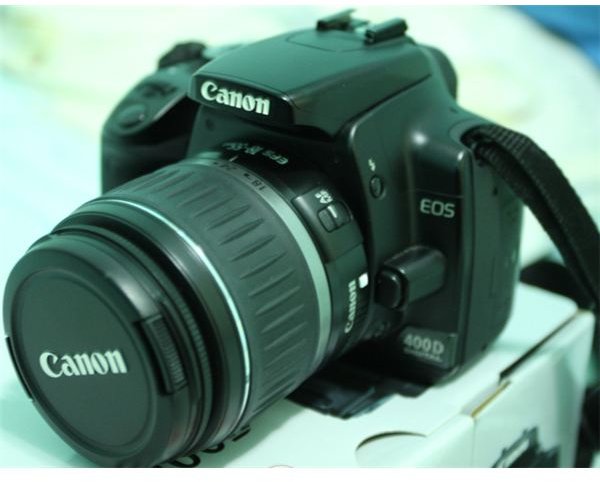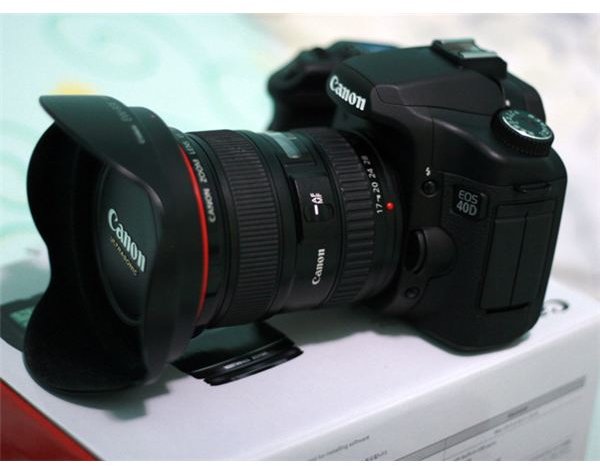Canon 400D or Canon 40D? A Digital SLR Camera Comparison - Should You Upgrade Your DSLR?
Introduction
I’ve been using the Canon 400D for almost two years now. I have used it, abused it, and subjected it to the most extreme conditions that it could possible withstand. Fortunately for me, Canon has made this camera baby as tough as it could be. But two years is a long time to keep it. I had to move on and upgrade to a better camera. It took me two months to finally decide. And two weeks earlier I made the plunge. I am now a proud owner of a handsome Canon 40D DSLR. Am I satisfied with my decision?
Form Factor
The first thing you notice when you get a hold of the Canon 40D is the big difference in its size and weight compared to the Canon 400D. The 40D is definitely heavier, but fortunately not that much bulkier. The weight difference becomes noticeable when you put the batteries in since the 40D’s battery pack is heavier than that of the 400D. Likewise, the Canon 40D is larger than the 400D: 146 x 108 x 74 mm vs. 127 x 94 x 65 mm. The good news is the 40D has a better grip than the 400D, so its weight won’t really bother you that much.
Design-wise, the Canon 40D definitely looks better than the 400D. When it comes to DSLR, the bigger your camera, the more robust looking it becomes. Another thing that you’d immediately notice with the Canon 40D is the different layout of some standard controls. The Power On switch for one, which was located near the shutter button of the 400D, is now located below the camera’s body near the edge of the view finder. It’s just a matter of getting used to it. Another minor change is the use of the rotating navigational dial. In the Canon 400D the navigation button was a 4-way jog dial while in the Canon 40D, it’s a navigational wheel of sorts. There’s also an additional button in the middle for activating the Live View Mode.
LCD Monitor
There are certainly many new features in the Canon 40D which were not present in the 400D. But I will concentrate on the more salient differences between these two Canon cameras.
First up is the LCD Monitor; the Canon 40D’s is 3 inches, whereas the 400D has a 2.5 inch LCD monitor. Of course with a bigger LCD monitor, you’d get to see a clearer image preview. In addition, the camera’s LCD monitor is also now used for the Live View Mode. This is a much needed feature especially if you are confronted to take a difficult shot.
ISO Setting

The Canon 40D’s ISO range is at 100-3600 as compared to the 400D’s 100-1600. This gives you a better image with less noise when shooting in an environment when flash is not allowed. If you take photos in low-light environments frequently, you would love the high ISO settings of the Canon 40D. In addition, you can now see the ISO settings in the 40D’s View Finder when taking a shot. So in manual mode, this will be a good feature to be sure that your ISO setting is set correctly.
Frame Rate
The Canon 40D has a faster frame rate than the Canon 400D at 6.5fps compared to the Canon 400D’s 3 fps. This would give you more JPEG burst when shooting photos. In other words, you can take more shots using the 40D than you can do with the 400D at the same specified time.
Conclusion
There are certainly many other features that the Canon 40D has which you won’t find in the Canon 400D. The Canon 40D is a big improvement from the 400D and even its twin brother the 450D. But despite these differences, you won’t really have a big problem adjusting to the Canon 40D. I would certainly recommend upgrading, especially if you have mastered all the features of your Canon 400D and you want something bigger and better. But if you haven’t fully enjoyed your Canon 400D, I would suggest you do so first before taking the Canon 40D route.
